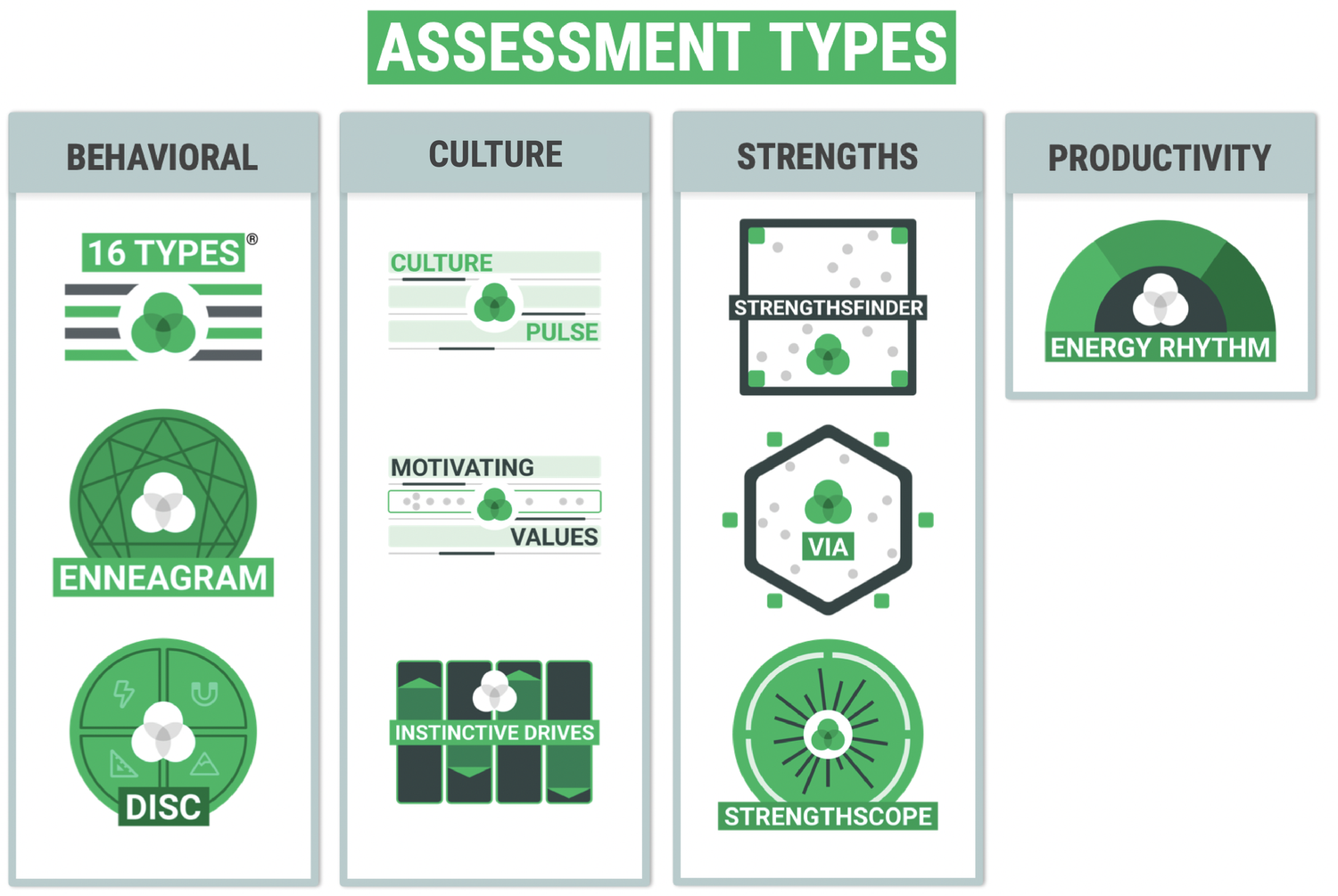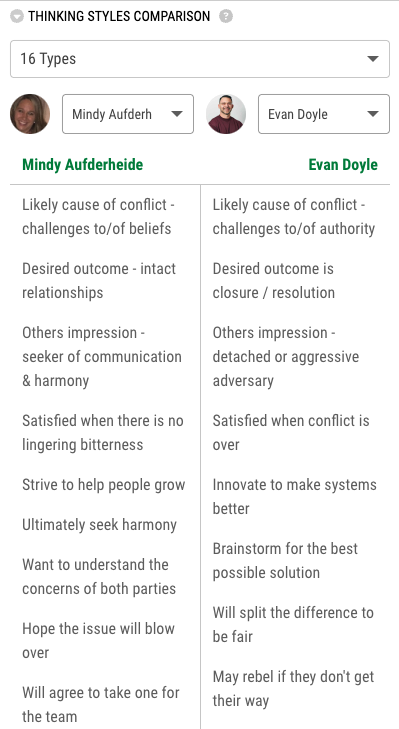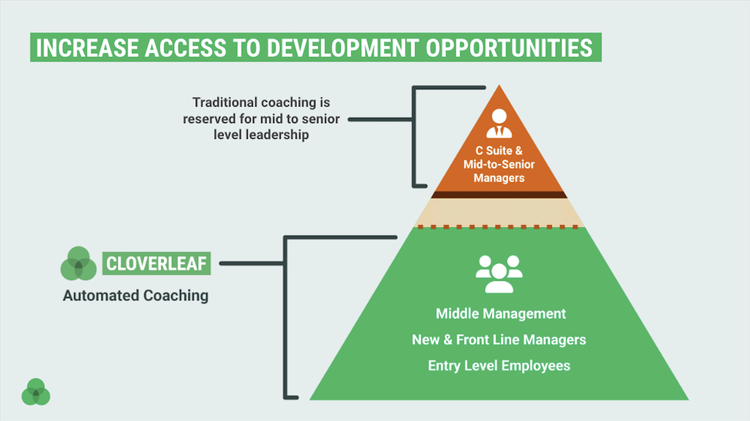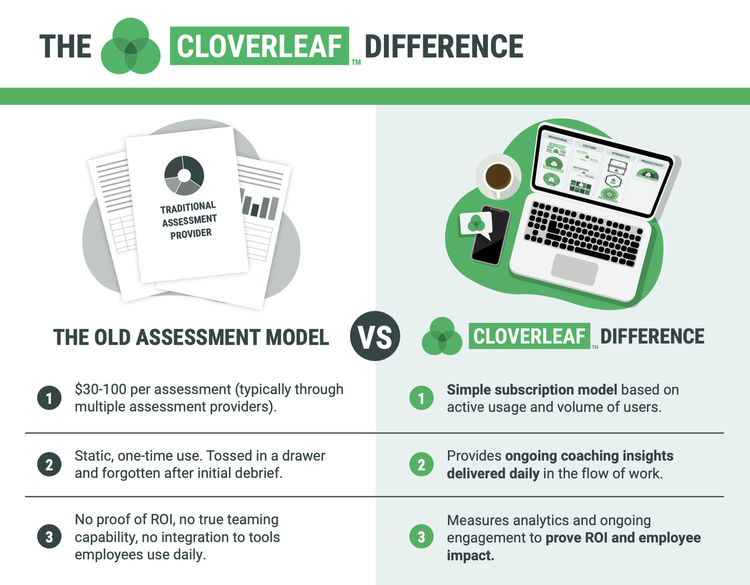In today’s increasingly diverse and globally distributed teams, fostering a culture of inclusivity and understanding is essential. One key aspect of promoting this inclusive environment is addressing unconscious bias in the workplace.
Unconscious bias, sometimes called implicit bias, refers to the attitudes and beliefs we unknowingly hold towards others, often stemming from stereotypes and societal expectations. These biases can significantly impact our interactions and decisions, potentially leading to discrimination, exclusion, and unhealthy workplace culture.
The harmful impact of workplace bias is starkly illuminated in a survey where an alarming 33% of those subjected to bias report feelings of alienation. Equally concerning is that 34% of employees facing bias choose to hold back their ideas and solutions. And a massive 80% would hesitate to recommend their employer to others.
These are clear indications of the long-term damage to an organization’s reputation and ability to attract and retain top talent. The importance of addressing unconscious bias in the workplace cannot be overstated.
Organizations can create more inclusive, productive, and engaging work environments by recognizing and actively working to eliminate these biases. This, in turn, benefits not only individual employees but also the overall success and growth of the company.
The following sections will explore unconscious biases, how they manifest in workplace interactions, and practical strategies for preventing and overcoming them to create an inclusive workplace.

Understanding Key Unconscious Biases:
Understanding the different types of unconscious bias is crucial for addressing and mitigating their impact in the workplace. While there are many forms of unconscious bias, we will focus on six common types that are particularly relevant to the recruitment process, hiring decisions, and work environment.
6 PREVALENT FORMS THAT IMPACT THE WORKPLACE
1. Affinity Bias
Affinity bias occurs when we unconsciously favor individuals with similar characteristics, backgrounds, or interests. This can lead to preferential treatment and less diverse teams, as people may inadvertently gravitate towards others who remind them of themselves.
2. Confirmation Bias
Confirmation bias is the tendency to seek out and interpret information in a way that confirms our pre-existing beliefs and assumptions. In the workplace, this can manifest as a manager overlooking an employee’s positive attributes or accomplishments simply because they have already formed a negative opinion about them.
3. Halo Effect
The halo effect refers to viewing someone in an overly positive light due to one outstanding quality or achievement. This can lead to biased evaluations and expectations, as individuals may be given more opportunities or responsibilities based on an inflated perception of their abilities.
4. Horns Effect
The horns effect is the opposite of the halo effect. It occurs when one negative characteristic or incident unfairly colors our perception of an individual, causing us to overlook their positive attributes or accomplishments. This can result in missed opportunities for growth and development within the workplace.
5. Attribution Bias
Attribution bias refers to attributing our successes to our efforts and abilities while blaming failures on external factors. Conversely, we often attribute others’ successes to external factors and their failures to personal shortcomings. This bias can lead to unfair judgments of employees’ performance and potential.
6. Racial and Gender Bias
Gender and racial biases are specific types of unconscious bias manifesting as discriminatory attitudes, beliefs, or stereotypes based on a person’s gender or ethnicity. These biases can lead to discrimination and exclusion within the workplace, limiting opportunities and advancement for underrepresented groups of people.
By familiarizing ourselves with different forms of unconscious bias, we can become more aware of how they may manifest in our daily interactions with teammates. This heightened awareness is the first step towards addressing and mitigating their negative impact in the workplace.

HUMAN SKILL PROGRAMS ARE HITTING LIMITATIONS...
5 THINGS THIS FREE RESOURCE WILL TEACH YOU
- Close the widening gap between learning and on-the-job application
- Overcome the tension of pausing productivity for development opportunities
- Integrate learning so it is actually in the flow of work
- The evolution of human skill development
- What Automated Coaching™ is and how it works.

Detecting and Navigating Unconscious Bias in Workplace Interactions
To foster a truly inclusive and equitable work environment, individuals must recognize unconscious bias within themselves and their interactions with coworkers. This section will explore examples of unconscious bias in everyday interactions, common pitfalls in biased performance evaluations, and active listening techniques for detecting and managing preferences.
11 Examples of Unconscious Bias in Everyday Interactions
Unconscious biases can manifest in myriad ways within the workplace, often subtly influencing daily team interactions. By examining personal and relatable examples, leaders can gain valuable insights into how these biases may affect their organization.
1. Exclusionary Conversations: Favoring certain coworkers in group discussions, dismissing others’ ideas based on preconceived notions, or making inappropriate jokes or comments that marginalize specific individuals.
2. Cliques and Homogeneity: Forming cliques with like-minded individuals or those with similar backgrounds.
3. Biased Choices Affecting Fairness and Opportunities: Allowing personal biases to influence decisions on project assignments, promotions, or hiring, potentially disadvantaging qualified candidates.
4. Assumptions About Expertise: Assuming that specific individuals have more or less knowledge or expertise in a particular field based on their gender, race, or age rather than evaluating their actual qualifications and experience.
5. Microaggressions: Making subtle, indirect, or unintentional discriminatory comments or actions towards individuals from marginalized groups.
6. Overlooking Diverse Candidates: Unconsciously ignoring or undervaluing resumes from candidates with non-traditional backgrounds, names, or experiences.
7. Networking Bias: Favoring individuals who are more similar to you or belong to your social circle during networking events or informal gatherings.
8. Unbalanced Workload Distribution: Assigning tasks and projects based on gender, racial, or cultural stereotypes.
9. In-Group Favoritism: Favoring the opinions and ideas of team members who belong to your own social, cultural, or professional group.
10. Mentoring Bias: Selecting mentees or proteges based on personal similarities or shared interests rather than their skills, potential, or needs.
11. Office Space Bias: Assigning office spaces or seating arrangements based on implicit biases, leading to unequal access to resources, collaboration opportunities, or visibility within the organization.

5 Common Pitfalls in Biased Performance Reviews
As leaders striving to foster growth and development within your team, it’s crucial to ensure that performance evaluations are free from unconscious biases. Understanding and addressing potential pitfalls can create a more equitable and supportive environment for all employees.
1. Relying On Stereotypes: Evaluating an employee’s performance based on gender, racial, cultural, age, or personality stereotypes rather than their abilities and achievements.
2. Focusing On Recent Events: Overemphasizing an employee’s recent successes or failures rather than considering their overall performance over an extended period.
3. Comparing Employees Unfairly: Judging an employee’s performance against that of their peers without considering differences in roles, responsibilities, or circumstances
4. The “Similar-to-Me” Bias: Overvaluing employees who share similar interests, life experiences, or characteristics with you, leading to an inflated assessment of their performance and potential.
5. The “Negative Attribution” Bias: Tending to attribute an employee’s mistakes or shortcomings to personal factors while attributing successes to external factors or luck, leading to an unfairly negative evaluation of their performance.
Awareness of and addressing unconscious biases in workplace interactions is crucial for fostering a more diverse, equitable, and inclusive (DEI) environment. By understanding how these biases can manifest in communication, team dynamics, decision-making, and performance evaluations, leaders can take proactive steps to mitigate their impact.
Proactively Addressing and Preventing Unconscious Bias in the Workplace
Tackling unconscious biases proactively is essential for cultivating a workplace where every employee can flourish. A commitment to diversity and inclusion is indispensable for stimulating innovation, boosting employee engagement, and elevating overall business performance.
By championing these values, organizations can harness the power of diverse perspectives, experiences, and skills, resulting in more effective decision-making and problem-solving capabilities.
Furthermore, increasing self-awareness plays a crucial role in this journey. When employees and leaders become more cognizant of their biases, they are better equipped to challenge and change their thought patterns.
To become aware of your own biases, start by educating yourself.
Paying attention to your thoughts and examining your beliefs can help you identify your current assumptions. – Harvard Business Review
This heightened self-awareness reduces bias and fosters empathy and understanding, fostering an environment where every person feels valued and respected.

RESOURCES FOR IDENTIFYING BIASES
The Cloverleaf Team Dashboard is a powerful tool that enables leaders and team members to effectively identify biases within teams, providing an array of benefits and features, such as:
- Comprehensive Insights: Gain a holistic understanding of your team’s strengths, weaknesses, and communication styles to proactively identify and address potential biases.
- Validated Assessments: Access some of the most popular and trusted assortments to gather valuable individual and team dynamics to uncover potential biases.
- Actionable Automated Coaching™: Receive accurate, relevant, in-the-moment coaching nudges on how to address identified biases, enhance collaboration, and improve team performance.
Leveraging comprehensive insights, validated assessments, and actionable coaching empowers users to identify and proactively address potential biases.
5 ACTIVE LISTENING TECHNIQUES FOR COACHING AND MANAGING BIASES
Active listening is essential for detecting and managing unconscious biases in workplace interactions. By employing specific techniques and honing their active listening skills, leaders can foster open communication and promote understanding among teammates.
1. Provide Your Full Attention: Consciously focus entirely on the speaker, avoid distractions, and maintain eye contact. Practice being present in the moment, setting aside personal thoughts or judgments, and providing visual cues (e.g., nodding) to show engagement.
2. Reflect And Paraphrase: Summarize the speaker’s key points in your own words to ensure understanding and show empathy. Practice using phrases like “What I hear you saying is…” or “It sounds like…” to demonstrate that you are actively listening and valuing their perspective.
3. Ask Open-Ended Questions: Encourage further elaboration and exploration by asking open-ended questions that cannot be answered with a simple “yes” or “no.” Practice using phrases like “Can you tell me more about…” or “How did you feel when…” to invite deeper conversation.”
4. Suspend Judgment: Consciously set aside personal biases and opinions while listening to others. Practice active curiosity, seeking to learn and understand the speaker’s perspective, even if it differs from yours.
5. Providing Non Judgemental Feedback: Offer constructive, empathetic, and unbiased feedback. Practice using “I” statements to express your thoughts and feelings without placing blame or judgment on the speaker (e.g., “I understand your concern, and I think it would be helpful if we considered…”).
By incorporating these tips into your daily interactions, you can effectively implement and improve active listening techniques, allowing you to better manage and address unconscious biases in the workplace.
Leadership’s Crucial Contribution to an Equitable Workplace Culture
Leaders play a pivotal role in shaping the culture of a workplace. Their actions, attitudes, and decisions set the organization’s tone and profoundly influence their teams’ behavior. In the context of unconscious bias, leaders have a significant responsibility to foster an equitable and inclusive work environment. Here’s how:
1. Exemplify Inclusive Behavior
As a leader, make a conscious effort to demonstrate inclusivity. Value each member’s unique contributions, celebrate diversity, and ensure fair treatment across the board. Modeling this behavior encourages others to do the same.
Acknowledging and valuing the unique strengths and perspectives of all team members, irrespective of their personality types
For example, incorporating members of each Enneagram Triad in your team could lead to a richer variety of viewpoints. The Gut Triad (Types 8, 9, and 1) brings instinct and intuition to the table. The Heart Triad (Types 2, 3, and 4) adds emotional intelligence and empathy, while the Head Triad (Types 5, 6, and 7) contributes intellect and analytical thinking.
Similarly, by considering all DISC profile types (Dominance, Influence, Steadiness, and Conscientiousness), leaders can ensure a balance between assertive, people-oriented, steady, and analytical personalities respectively. This balance can promote comprehensive decision-making and effective communication within the team.
16 Types also provides insight into a range of personalities that leaders can use to foster a well-rounded and balanced team.
Leaders can celebrate inclusivity in a deeper sense by intentionally including and valuing members with diverse personality types. Going beyond obvious characteristics like race, gender, and age to value diversity in thought, perspective, and approach.
Don’t limit yourself or your team to a single perspective; remember, the more assessments you engage with, the richer your understanding becomes. Start your journey towards a more cohesive and productive team today by taking your first assessment at Cloverleaf!

Take A Cloverleaf Assessment
By taking assessments and getting actionable insights on your results, you’ll learn something new about yourself and your team.
- Unlock your team's full potential and try Cloverleaf today.
2. Implement Diverse And Inclusive Policies
Champion diversity and inclusion by establishing diverse hiring practices and offering equal growth and development opportunities. Create policies that discourage discrimination and encourage flexibility, ensuring everyone in your team feels supported.
3. Invest In Supportive Resources
Empower ongoing development by utilizing tools and training programs to showcase your commitment to reducing bias.
4. Facilitate Open Dialogue
Foster a culture of open, honest conversations around bias and discrimination. Regularly invite and be receptive to feedback, and take prompt action to address any issues that arise.
5. Monitor And Rectify Bias
Regularly assess the workplace for signs of bias. Solicit input from employees and conduct audits to implement measures to correct these biases swiftly.
By adopting these steps, leaders can ensure their leadership approach actively contributes to a more equitable, inclusive workplace culture.

The Long-Term Benefits of Addressing Bias In The Workplace
The journey to an inclusive and equitable workplace requires unearthing and addressing biases. Employees who feel valued and included are more likely to be committed to their roles, stay with the company longer, and contribute more effectively to the team’s goals.
Promoting a workplace free from bias is not just the right thing to do—it’s an intelligent business strategy that can drive growth, innovation, and success in the long term. It sends a strong message to potential employees, stakeholders, and the public that the company values fairness and equity. Further, an inclusive and equitable workplace attracts top talent from various backgrounds, enhancing the organization’s reputation, retention, and competitiveness in the global market.
Creating better workplaces is paved with awareness, understanding, commitment, and action toward reducing unconscious bias. While the journey may be challenging, the rewards – a truly inclusive, diverse, and equitable workplace where everyone feels valued and empowered – are worth the effort.
Performance conversations are essential to helping employees reach their full potential and fostering strong relationships within the workplace. These one-on-one discussions allow managers and employees to engage in active listening, personalized professional development, and rapport-building.
When engaging in performance conversations with your employees, adopting a coaching mindset can significantly improve the outcomes of these conversations. The following factors can help ensure that your discussions are productive and effective in achieving your goals.
7 Replicable Elements Of Effective Performance Conversations
Prepare for Success: The Dynamics of Planning and Adaptability in Performance Management
Preparing for a performance conversation is crucial to its success. As a manager, you should spend plenty of time planning and developing an agenda based on the topics you want to cover and those that employees have mentioned in previous performance discussions. This ensures that you cover all necessary points and helps you stay on track during the conversation.
Preparation should also include reviewing any notes from previous one-on-one meetings. This can help you identify any patterns in employee performance or areas of improvement that were discussed but not fully addressed.
It’s essential to remember that every employee is unique and may require a different communication style.
Misunderstandings and miscommunications are an inevitable part of human interactions. However, thinking about how and what you communicate can create a team environment conducive to open, productive, professional conversations. – Mary Sharp Emerson
Identifying, understanding, and adapting to each employee’s communication style is crucial to having a productive conversation.
Cloverleaf’s assessment-driven Automated Coaching™ platform helps leaders adapt their leadership, communication, and behavior in real-time. Using assessment tools, individuals can better understand their strengths and areas for development to guide meaningful performance reviews. With powerful insights, managers can uncover and leverage their employees’ strengths and potential to achieve their goals.
Developing a deep understanding of each employee’s motivations and work preferences, managers can tailor their coaching tips to meet their individual needs and support their employee engagement strategies.
Embrace Ongoing Coaching and Accountability for Performance Improvement
Effective performance management requires ongoing coaching and accountability beyond annual performance reviews.
When managers regularly provide feedback about the quality and quantity of their employees’ work, they’re more likely to fully understand what is needed to continue good performance, correct poor performance, or improve mediocre performance. – shrm.org
Proactive coaching can also help managers identify and address issues before they become bigger problems.

Coaching in the workplace is invaluable if an organization is to achieve its goals. It should be part of the continuous employee performance management by managers to maximize the employees’ potential. – quantic.edu
By providing regular coaching conversations and resources for professional development, managers can help employees stay engaged and motivated to improve their performance consistently.
Practice Active Listening And Asking The Right Questions To Set Meaningful Goals
Active listening is a critical skill for managers to master when having successful performance conversations. Practicing the art of listening during performance conversations can help managers better understand their employees’ needs, goals, and challenges.
Becoming a better listener involves paying closer attention to nonverbal cues, such as body language and tone of voice, and asking open-ended questions encouraging employees to share more about their experiences.
When using guiding questions, it’s important to consider the individual’s communication style and adapt the phrasing of the questions accordingly. Some employees may prefer more direct questions that require specific answers, while others may respond better to more open-ended questions that allow for a broader discussion. Additionally, managers should be prepared to follow up with clarifying questions to understand the employee’s perspective fully.
It’s also important to leave time for open-ended questions allowing employees to share their thoughts and ideas more freely. This can help build trust and rapport between the manager and employee and provide valuable insights into the employee’s perspective.
5 Direct Questions:
Can you tell me more about your progress on [specific goal or project]?
What are your top priorities right now?
How would you rate your level of job satisfaction?
Are there any areas where you feel you need additional support or resources?
What do you think are your greatest strengths and areas for improvement?
5 Open-Ended Questions:
What have been some of the most rewarding aspects of your role?
How do you see yourself growing within the company?
What do you think are some potential solutions to the challenges you’re facing?
Can you tell me more about how you approach problem-solving?
How do you think we can improve collaboration and communication within the team?
5 Clarifying Questions:
Can you give me an example of what you mean by [specific point]?
To clarify, do you mean [rephrase employee’s point]?
How would you suggest we address this issue?
Can you elaborate on what you see as the root cause of the problem?
How can I support you in achieving your goals?

Do You Want Better Performance Conversations?
Find Out How To Quickly:
- Close the gap between learning and on-the-job application
- Personalize growth to individual strengths and needs
- Equip your managers to lead in the flow of work
- Scale human skills that accelerate teamwork
- Prove the ROI of your talent development programs
By adapting the phrasing of questions to match the employee’s communication style and leaving time for open-ended questions, managers can ensure that all necessary topics are covered, discuss the next steps, address performance issues, and provide constructive feedback concerning goal-setting.
Once these needs and goals have been identified, it’s important to translate them into concrete objectives and key performance indicators (KPIs) that are specific and measurable. Below are four suggestions for establishing measurable goals to help you get started.
Quantify Targets: Use quantifiable targets whenever possible. For example, instead of setting a vague goal of “increase sales,” set a specific target such as “increase sales by 10% within the next quarter.”
Use Concrete Metrics: Use concrete metrics that can be tracked and measured over time. This can help provide a clear picture of progress and identify areas where additional support may be needed.
Collaboratively Work Together: Involve employees in the goal-setting process to ensure that objectives and KPIs are both challenging and achievable. This can help motivate employees to take ownership of their performance.
Schedule Regular Check-Ins: Set a cadence to review progress towards objectives and KPIs to ensure they are met and identify areas where adjustments may be needed.
Clear objectives and KPIs can help employees stay focused and motivated while providing a framework for managers to assess performance and provide feedback.
Avoid conflict triggers, discover opportunities to ask better, more insightful questions, and learn how to have better conversations by utilizing the Side-By-Side Teammate Comparison on Cloverleaf.


Honest Feedback: The Value Of Transparency In Performance Review Conversations
To truly gain your employee’s trust and build a culture of transparency, it’s important to go beyond simply providing feedback and facilitate transparent, two-way communication.
Minimizing employee issues or using lighthearted conversations can create tension and damage your employee’s trust in their leader. Additionally, sugarcoating discussions and following up with a written-warning or unfavorable language can also cause damage an employee’s outlook on their integrity.
Providing honest feedback while empathizing with your employee’s perspectives is essential. While feedback may not always be flattering, transparency goes a long way in building trust and fostering healthy conversations.
Celebrate Achievements And Give Attention: The Role of Employee Recognition in Performance Feedback
Effective employee feedback isn’t just about identifying areas for improvement; it’s also about celebrating achievements and recognizing employee successes. During these conversations, it’s important to give employees your undivided attention and make them feel like a priority. This means avoiding multitasking or distractions and dedicating the meeting time solely to the performance discussion.
When a team member’s performance meets or exceeds your expectations, it’s important to celebrate their achievements. This can be as simple as giving employees recognition for a job well done or as involved as offering rewards or organizing a celebration.
Employee recognition is a vital component of building a strong and motivated workforce. By acknowledging and celebrating employee contributions, managers can foster a culture of engagement and retention that benefits both the employee and the organization.
By recognizing and celebrating individual achievements, managers can encourage employees to strive for their best and support one another along the way.

Timing: Choosing the Right Moment for Constructive Feedback
Choosing the right moment for performance reviews is crucial to their success. While it’s essential to address issues promptly, there are situations where it may be necessary to delay feedback for logistical or sensitivity reasons.
For example, if an employee is in a unionized environment and the issue being addressed is subject to labor negotiations, it may be necessary to wait until negotiations are complete to provide feedback. Similarly, if an employee has recently filed a complaint, it’s vital to ensure that feedback is not seen as retaliatory or influenced by the criticism.
Timing is also crucial in terms of frequency. It’s important not to overwhelm them with too much feedback or feedback that is too frequent. Finding the right balance is critical to ensuring effective and well-received feedback. Below are several tips to help you find a healthy cadence for meaningful conversations with team members:
Consider the employee’s workload: Choose when the employee is not overly busy or stressed with other work-related tasks.
Take note of recent events: Be mindful of current events, such as changes in the employee’s circumstances or a challenging project.
Give advance notice: Let the employee know when the performance conversation will occur. This gives them time to prepare and ensures they are not caught off guard.
Choose a private and comfortable location: Find a private place where the employee feels comfortable and safe to have an open and honest conversation.
Be flexible: Be willing to adjust the timing of the conversation if unforeseen circumstances arise. Flexibility and understanding the employee’s needs and schedule are essential.
By choosing the right moment to discuss past performance, managers can ensure that feedback is well-received and effective in promoting employee growth and development. Whether delaying feedback for logistical or sensitivity reasons or finding the right frequency, timing plays a critical role in the success of performance management.
Follow-Up: Stay On Track With A Review Process During Meaningful Check-Ins
It’s important to stay on track by scheduling regular check-ins with employees. This ensures that progress is made toward meeting performance goals and that any issues or concerns are addressed promptly.
Consider scheduling follow-ups at regular intervals, such as weekly or monthly, or after completing important milestones or big projects. This provides opportunities for employees to discuss any concerns or questions about their work duties and ensures that they are aware of their progress toward meeting their performance goals.
Final Thoughts
Having productive and meaningful discussions can be challenging when you don’t deeply understand the employees you’re working with. With Cloverleaf’s assessment-driven coaching, you can gain insights into your team member’s strengths, motivations, and working styles. This allows you to tailor your coaching approach and personalize your conversations, making them more effective and enjoyable for both you and your employees.

Ready to take your performance management to the next level? Schedule a demo to learn more about how Cloverleaf can help you drive better team performance and engagement using the power of Automated Coaching™.
Personal development is a crucial component of success in the workplace. The adage goes, “You can’t lead others until you are leading yourself.” Developing a strong sense of self-awareness, communication, adaptability, and time management skills is essential to be an effective leader and team member.
Self-leadership is the most important form of leadership, as it sets the foundation for all other forms of leadership. In a recent article, Tony Gambill explains that self-leadership is about taking responsibility for your own growth and development, as well as your own thoughts, feelings, and actions. By prioritizing personal development in the workplace, individuals can become more confident, productive, and effective, ultimately leading to greater success for themselves and their teams.
The concept of individuals being responsible for themselves before anyone else is a fundamental principle of personal development. At its core, this idea emphasizes the importance of owning your life and career.
While seeking support and guidance from others or their leaders are natural, it’s ultimately up to employees to take the necessary steps to achieve their goals and reach their potential. However, this is not to say that employers cannot support personal development within their organization.
Successful workplaces are led by employers who actively encourage the personal development goals of their employees. By supporting the professional development of their employees, leaders can gain a significant edge: 94% of employees would stay at a company longer if it invested in their careers.
Employers can provide resources and opportunities to increase communication skills, emotional intelligence, and goal setting. By investing in the personal growth of their employees, employers not only support their career goals but also strengthen their employee engagement strategy.
What Is Personal Development In The Workplace?
Personal development in the workplace is a continuous journey of self-improvement, focusing on enhancing professional skills, expanding knowledge, and developing abilities. It’s about actively seeking opportunities for growth to advance one’s career and contribute more effectively to organizational goals.
Personal development goals for work can help individuals achieve their full potential by successfully utilizing their strengths and working collaboratively with others. Personal development in the workplace is an ongoing process that involves setting goals, seeking growth opportunities, and actively working to improve oneself.
The future workplace experience will be increasingly competitive and dynamic, with rapid technological advances and evolving job requirements. Personal development in the workplace is crucial because it can help individuals stay relevant and adaptable in this changing landscape while also providing organizations with the skills and knowledge necessary to remain competitive.
Personal development is more than just an employee expectation; it is crucial to a company’s success. While personal development is often viewed as an individual responsibility, it is also essential to a company’s success.


Do You Want To Increase Development In Your Workplace?
Find Out How To Quickly:
- Scale development so that it is available to each team member
- Personalize growth to individual strengths and needs
- Integrate learning so it is actually in the flow of work
- Develop human skills fast enough to solve business problems
- Prove the ROI of your development programs
10 Examples of Personal Development Goals For Professional Growth
The most impactful personal development goals for individuals and organizations typically focus on enhancing skills, fostering collaboration, and promoting growth. Here are some examples of strategic development goals that are beneficial for employees and the organization:
Effective Communication: Improving verbal and written communication skills can strengthen collaboration, reduce misunderstandings, and increase efficiency.
Emotional Intelligence: Developing EQ to operate with more empathy and soft skills to support better teamwork, reduce drama in the workplace, and build stronger relationships.
Productivity: Setting goals to improve time management, prioritization, and organization can help employees focus and accomplish more in less time.
Critical Thinking: Enhancing problem-solving abilities can help employees tackle complex challenges, innovate, and contribute to the organization’s success.
Adaptability: Practicing resilience can help individuals navigate change, manage stress, and bounce back from setbacks, fostering an agile workforce.
Leadership Skills: Developing leadership and management competencies, such as delegation, motivation, and decision-making, can prepare employees for future roles.
Relationship-Building: Helping employees to build professional networks and foster relationships within and outside the organization can lead to new opportunities, collaborations, and knowledge sharing.
Upskilling: Promoting a growth mindset and the pursuit of new skills, and supporting ways to do so, can help employees stay current and bring fresh perspectives to their work.
Self-Reflection: Encouraging employees to establish a cadence for setting, evaluating, and adjusting their personal and professional goals can help them focus on their professional success, work ethic, and contribution to the organization’s objectives.
Work-Life Balance: Supporting integration can foster well-being, mental health, and a healthy work environment. Engaged employees who feel their personal life is respected are less likely to experience burnout and will continue to perform positively.
By focusing on these strategic personal development goals, employees can experience individual growth while contributing to the organization’s overall success.
5 Steps For Leaders To Support Personal Development Goals At Work
If organizations want to support the personal development of their employees, it’s essential to encourage them to set clear goals and create a plan to achieve them. Below are six practical ways to help teammates identify personal development goals and achieve success in their work:
Conduct Personal Development Conversations with Team Members
One-on-one time will help employees feel heard, supported, and empowered. To facilitate personal development in the workplace, leaders can schedule interviews with individuals to discuss their goals. During these interviews, leaders can:
Ask open-ended questions to encourage employees to express their aspirations, challenges, and areas for improvement.
Listen actively and empathetically to understand employees’ perspectives and experiences.
Provide guidance on setting realistic, actionable, and measurable goals that align with the organization’s objectives and the employee’s aspirations.
Offer resources and support, such as training opportunities, mentorship, or networking events, to help employees reach their goals.
Help Employees To Discover And Leverage Their Strengths In Work and Life
Leaders can practice employee coaching to help teammates discover and leverage their strengths by:
Utilizing personality tests for employees, like CliftonStrengths or the VIA Character Strengths, to help employees identify their unique skills and talents.
Facilitate discussions among teammates to recognize one another’s strengths within the team to foster collaboration and develop complementary skill sets.
Provide cross-functional opportunities for employees to apply their strengths in challenging projects, thereby promoting personal growth and professional development.

Use Development Apps for Performance Management
Promote development apps like Headspace, 15Five, or Todoist to help employees build self-leadership skills, such as time management, goal setting, and mindfulness. Encourage employees to:
Set aside time for daily reflection and goal tracking.
Share their experiences and progress with the team to create a culture of continuous learning and growth.
Uncover and Address Pain Points to Illuminate Opportunities for Personal Growth
Facilitate team discussions or conduct surveys to identify common pain points, such as communication barriers, inefficient processes, or lack of feedback. Address these issues by:
Providing targeted training or coaching to help employees develop new skills.
Implementing process improvements or communication tools to streamline workflows.
Establishing a feedback culture that encourages constructive criticism and coaching in the workplace.
Support Individuals in Assessing Progress, Celebrating Achievements, and Refining Growth Plans
Support employees in evaluating their personal development journey by:
Prioritizing performance reviews to discuss successes, challenges, and areas for improvement.
Celebrating personal and team successes to foster motivation and engagement.
Encouraging employees to set new goals and adjust their growth strategies based on their progress and evolving needs.
By implementing these strategies, leaders can foster a culture of personal development that empowers employees to reach their full potential and contribute to the organization’s success.

The Positive Impact Of A Coaching Leadership Style on Team Members' Personal Development
Leaders who actively look for coaching moments rather than dictating how an individual should or must approach personal development can help improve emotional intelligence, collaboration, and organizational performance.
One study suggests that leaders who practice coaching find that:
Employees increasingly dedicate time to exchanging insights and actively participating in their personal and professional evolution.
Understanding of the obstacles an organization encounters emerges, along with increased ingenuity in devising solutions to overcome them.
Confidence is cultivated through a gradual learning process instead of adopting a high-risk “all or nothing” tactic.
Communication and collaboration become more solution-oriented and empathetic, fostering open and reciprocal exchanges.
Prolonged enhancements in performance are achieved, ensuring lasting progress and growth.
By adopting a coaching leadership style, leaders can substantially impact their teams’ personal development, ultimately benefiting the individual, the team, and the organization. Below are some of the most notable advantages:
7 Benefits Of Leaders Who Coach Their Teammates Toward Personal Development
Ownership Mentality: Coaching encourages employees to take responsibility for their growth, fostering a sense of empowerment and boosting their confidence. Leaders who coach their employees help them recognize their strengths and abilities, enabling them to tackle challenges more effectively.
Healthy Team Dynamics: Coaching leaders create an environment of open communication and collaboration, enabling teammates to work together more effectively. This approach promotes sharing ideas, leveraging diverse skill sets, and the development of synergistic teamwork.
Job Satisfaction: Employees who feel supported in their personal development journey tend to engage at work. Leaders who show a genuine interest in their employees’ growth can increase motivation and help teammates find fulfillment in their work.
Higher Retention and Loyalty: Employees who feel valued and encouraged to grow often remain loyal to the organization.
Development of Future Leaders: Coaching can help identify and nurture high-potential employees by identifying those with exceptional adaptability, problem-solving abilities, and a strong drive for improvement.
Alignment with Organizational Goals: By helping employees align their personal development goals with the organization’s strategic objectives, coaching leaders ensure that individual growth contributes to the company’s success.
Innovation: Coaching encourages individuals to think outside the box about new challenges. Exploring new ideas can result in uncovering creative solutions. Organizations can stay competitive and adapt by fostering a culture that values experimentation.
By nurturing a growth mindset, coaching-driven leadership creates a positive environment that cultivates a culture of continuous learning, innovation, and development.
Automated Coaching™ To Support Personal Development In The Workplace
Personal development in the workplace is a crucial aspect of individual and organizational success. Leaders who practice a coaching approach to support their teams understand that personal and professional growth is not a one-time event.

Organizations that invest in these efforts should experience reoccurring, continuous positive change. With Cloverleaf, leaders, and teammates can explore powerful insights concerning themselves and others for personal development opportunities in critical areas such as:
Change
Communication Style
Conflict Triggers
Motivations
Persuasions
Work Styles
Leadership Style
Development
The highly-personalized insights are relevant to each individual to enhance personal development across your organization significantly. By leveraging the Cloverleaf dashboard, you can create a personalized and data-driven coaching experience that empowers employees, fosters growth and contributes to a culture of continuous learning.
The future of personal development in the workplace hinges on customizable development plans based on the unique aspects of the individual within an organization. Automated Coaching™ is adaptable to the specific needs of each employee. Click the button below to start your free trial.


